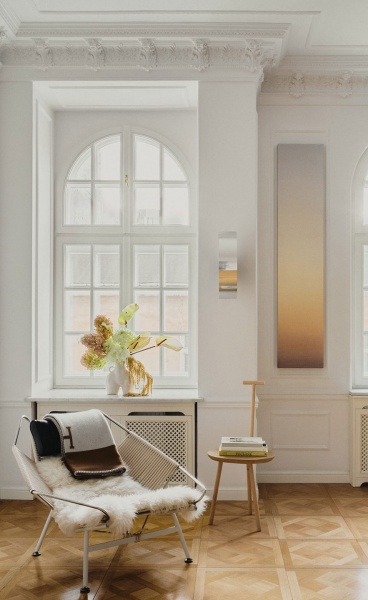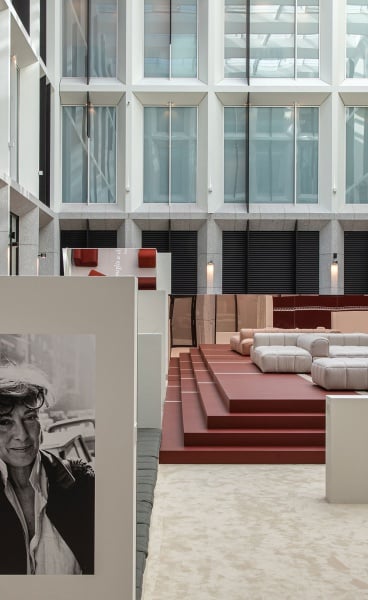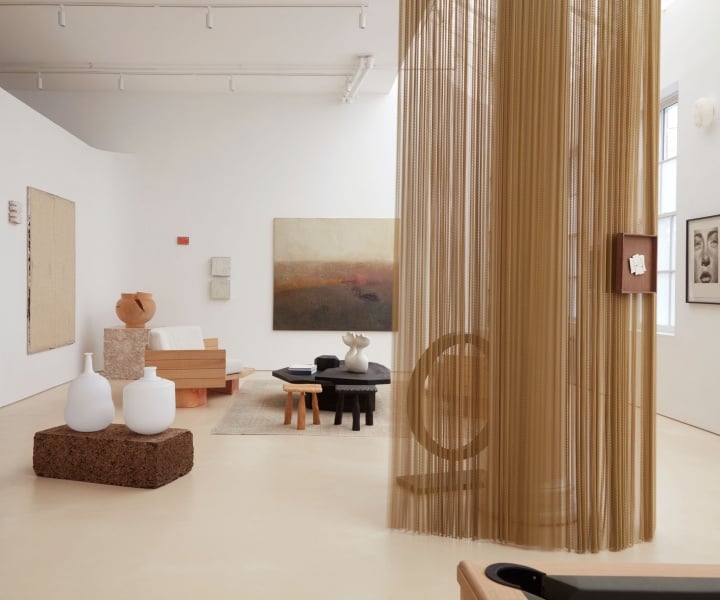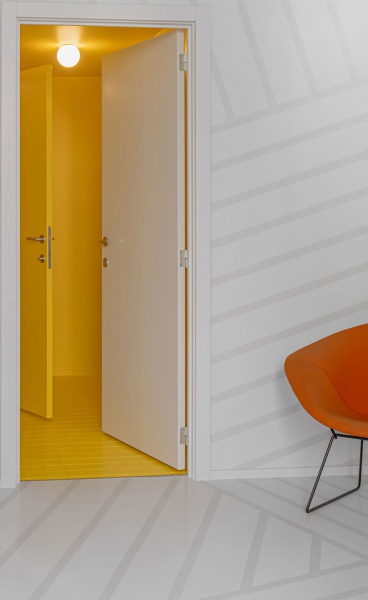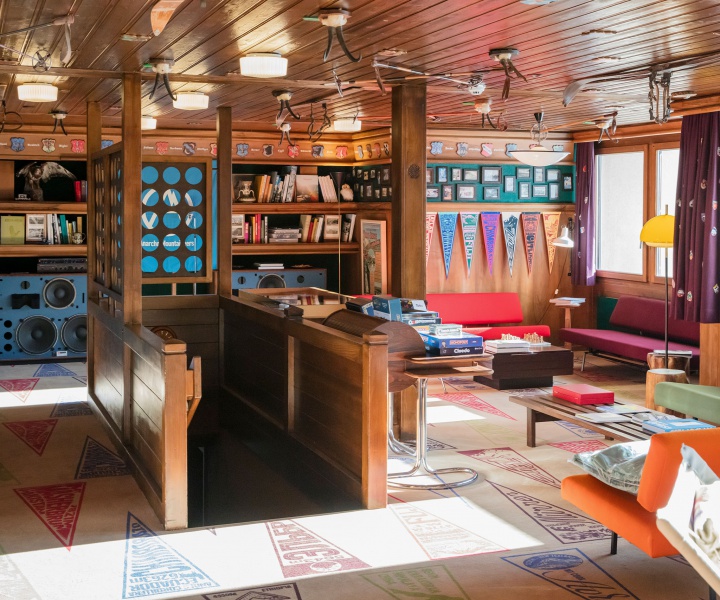Project Name
Sacripante GalleryPosted in
Bars, Design, Interior DesignLocation
Telephone
+39 06 48903495Architect
Giorgia CerulliCompleted
2014Visit Website
sacripanteartgallery.com| Detailed Information | |||||
|---|---|---|---|---|---|
| Project Name | Sacripante Gallery | Posted in | Bars, Design, Interior Design | Location |
59 Via Panisperna 00184 Roma
Italy |
| Telephone | +39 06 48903495 | [email protected] | Architect | Giorgia Cerulli | |
| Completed | 2014 | Visit Website | sacripanteartgallery.com | ||
The eerie roughness of the architecture is complemented by 1940s furniture such as lush velvet sofas and bronze & glass coffee tables; the result is both inviting and enchanting, transporting the visitor into the magical realm of an otherworldly members-only art-club. Naturally, no such club would be complete without a proper bar: modelled as a turn-of-the-century chemist’s, complete with wooden storage-drawers, apothecary jars and potion bottles, the hidden cocktail bar alludes to a speakeasy, the secret establishments during Prohibition in America. Fittingly enough, the bar serves drinks in original decorated glasses from the 1920s and 30s. The bar’s design also pays homage to the Via Panisperna boys: named after the gallery’s address, they were a group of young physicists and chemists in the 1930s based in the Physics Institute down the street, who discovered slow neutrons in 1939 —a discovery that subsequently led to the design of the nuclear reactor and the atomic bomb.
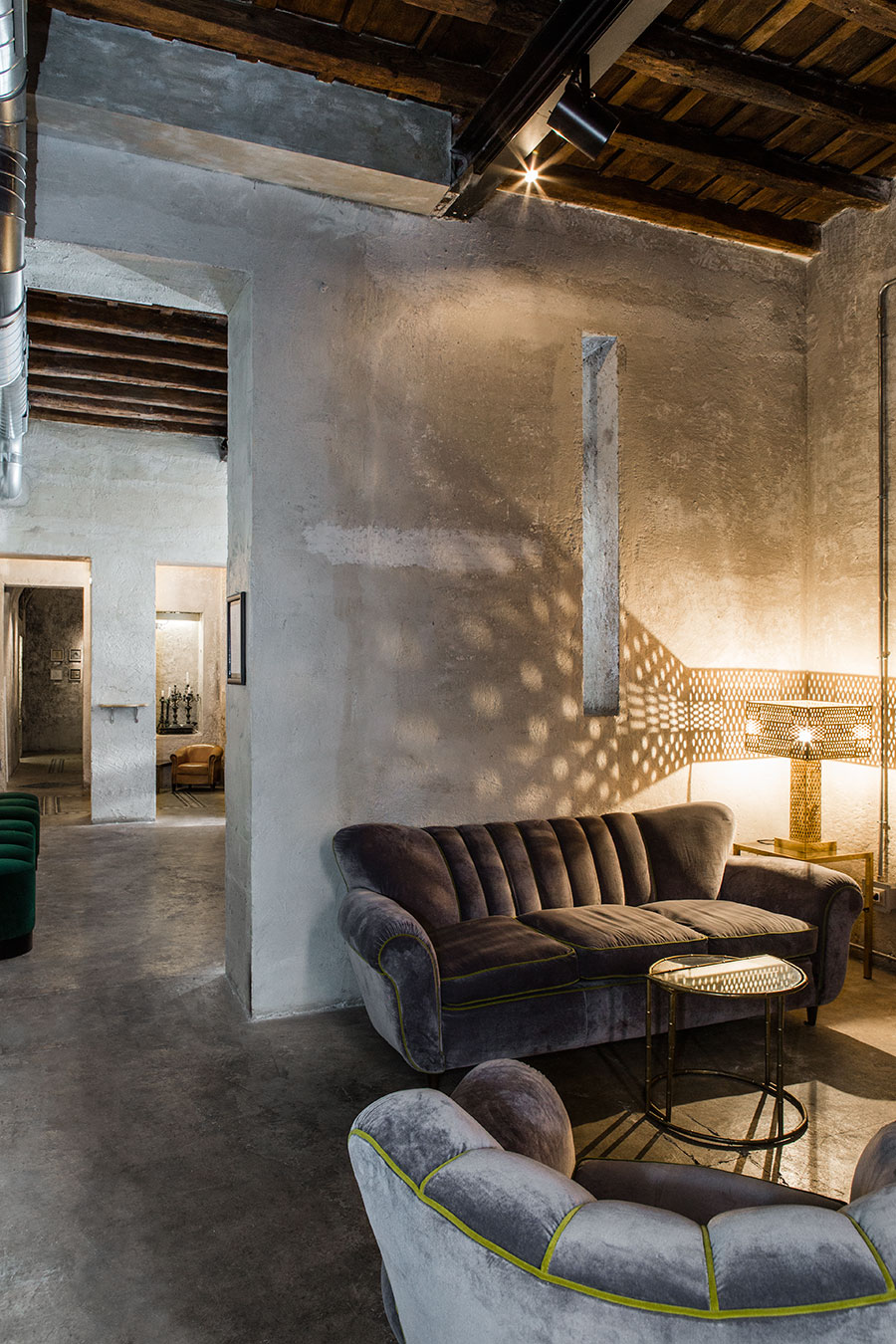
Photo by Serena Eller.
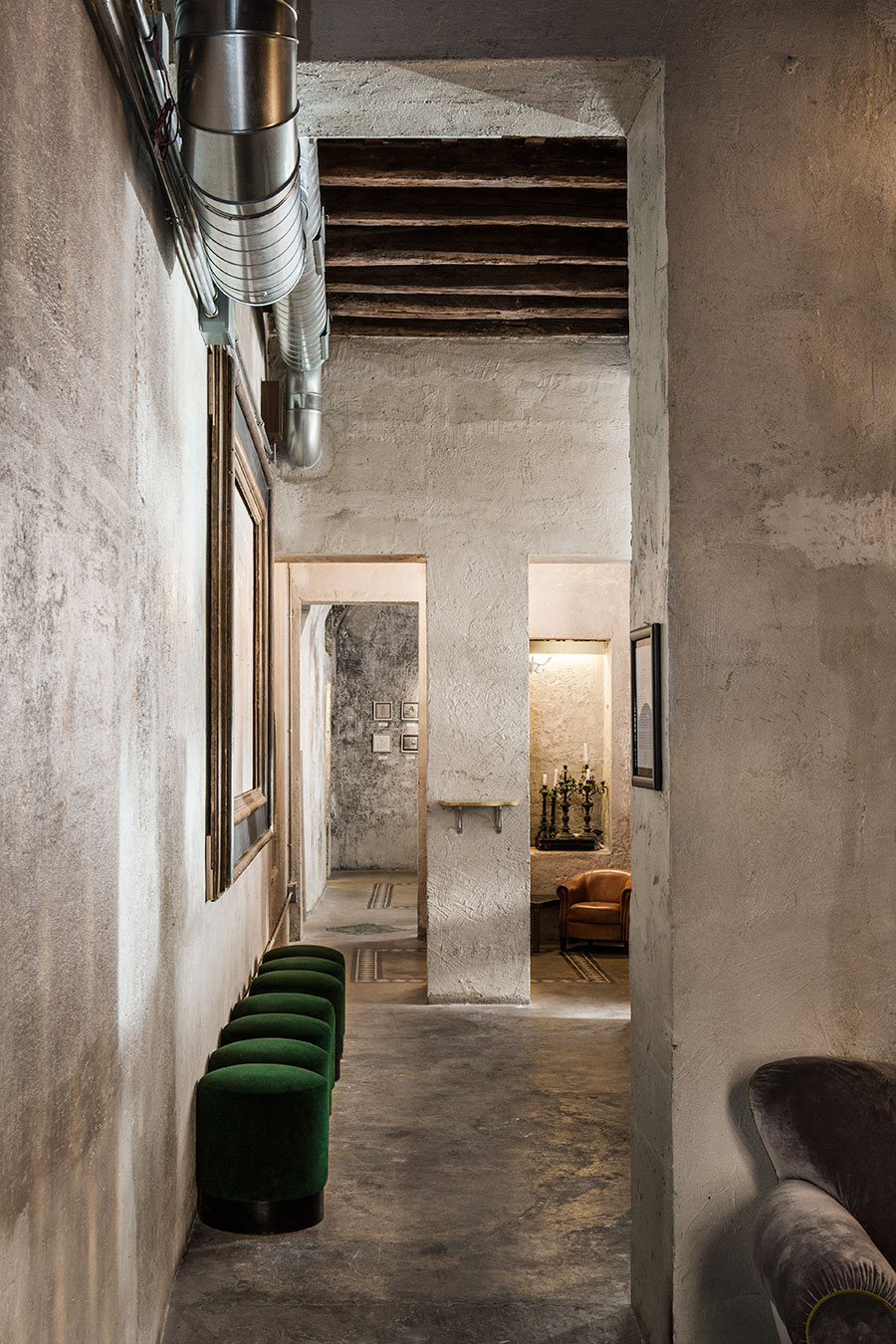
Photo by Serena Eller.
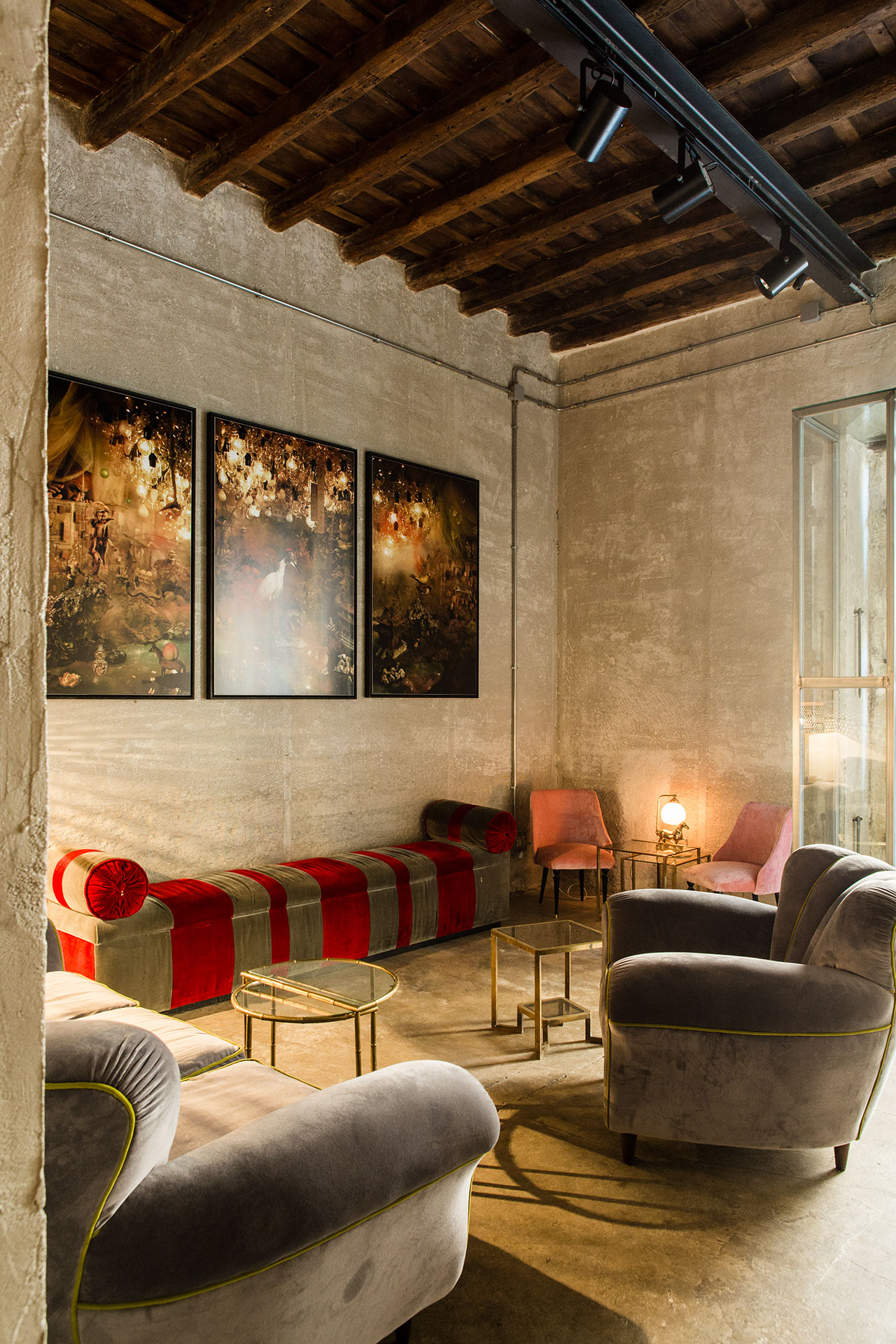
Photo by Serena Eller.
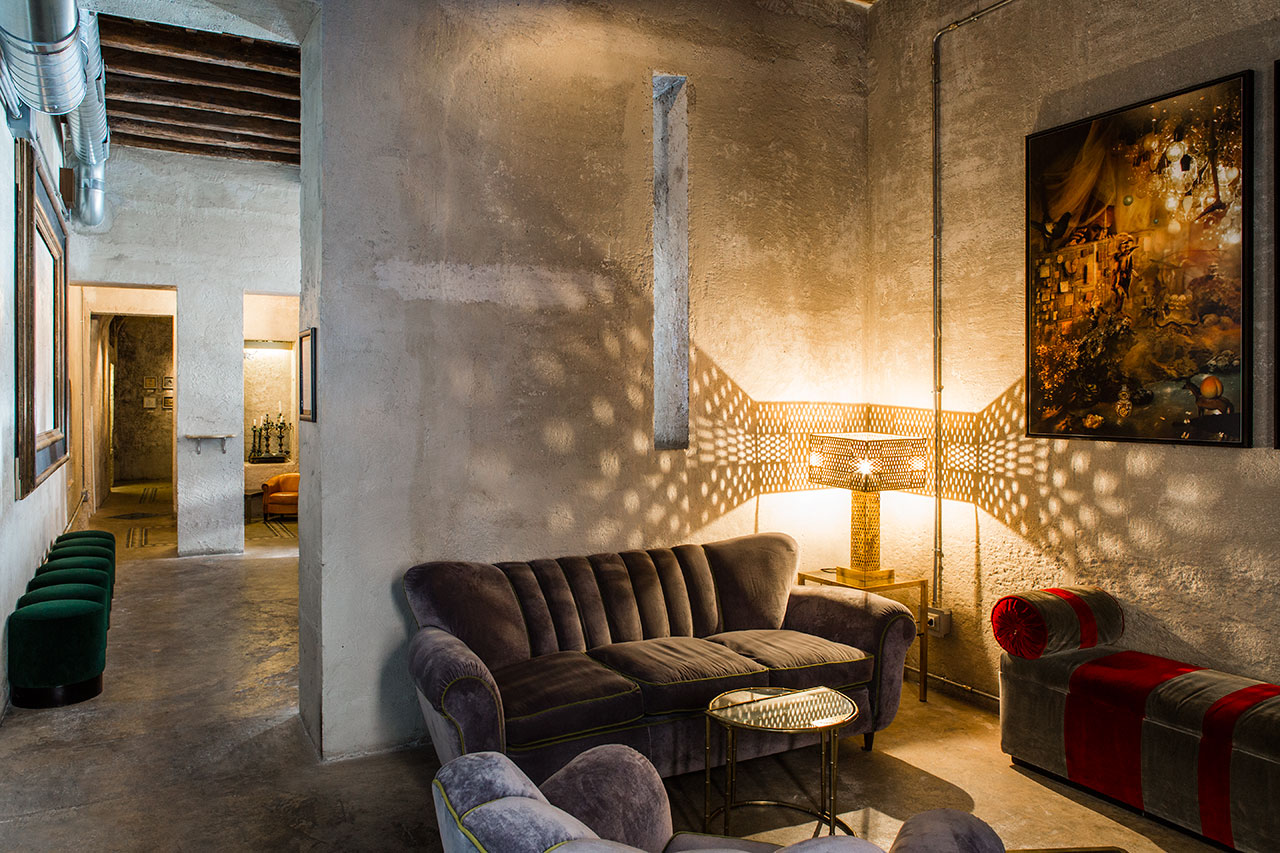
Photo by Serena Eller.
Dedicated to investigating and exploring Lowbrow art through organising only two exhibitions per year, Sacripante Gallery opened auspiciously in November 2014 (Giorgia gave birth to her daughter Lea on the opening day) with an exhibition of local street artists Lucamaleonte and David Diavù Vecchiato curated by Rossana Calbi & Giulia Piccioni. Lowbrow, otherwise known as pop surrealism, couldn’t be a better fit for the gallery’s quirky eclecticism. Bringing together “two at first glance contradictory concepts, surrealism preoccupation with dreams and the unconscious and popular culture’s obsession with surface and commonalities”, as Kirsten Anderson has written in the New York Times, the Lowbrow movement mirrors the confluence of the impish, punk iconoclasm of Sacripante Gallery’s art exhibitions and the austere, decadent nostalgia of the building itself. In experiencing the one against and through the other, the visitor transitions from a distanced viewer to an insider, admitted into the artists’ realm.
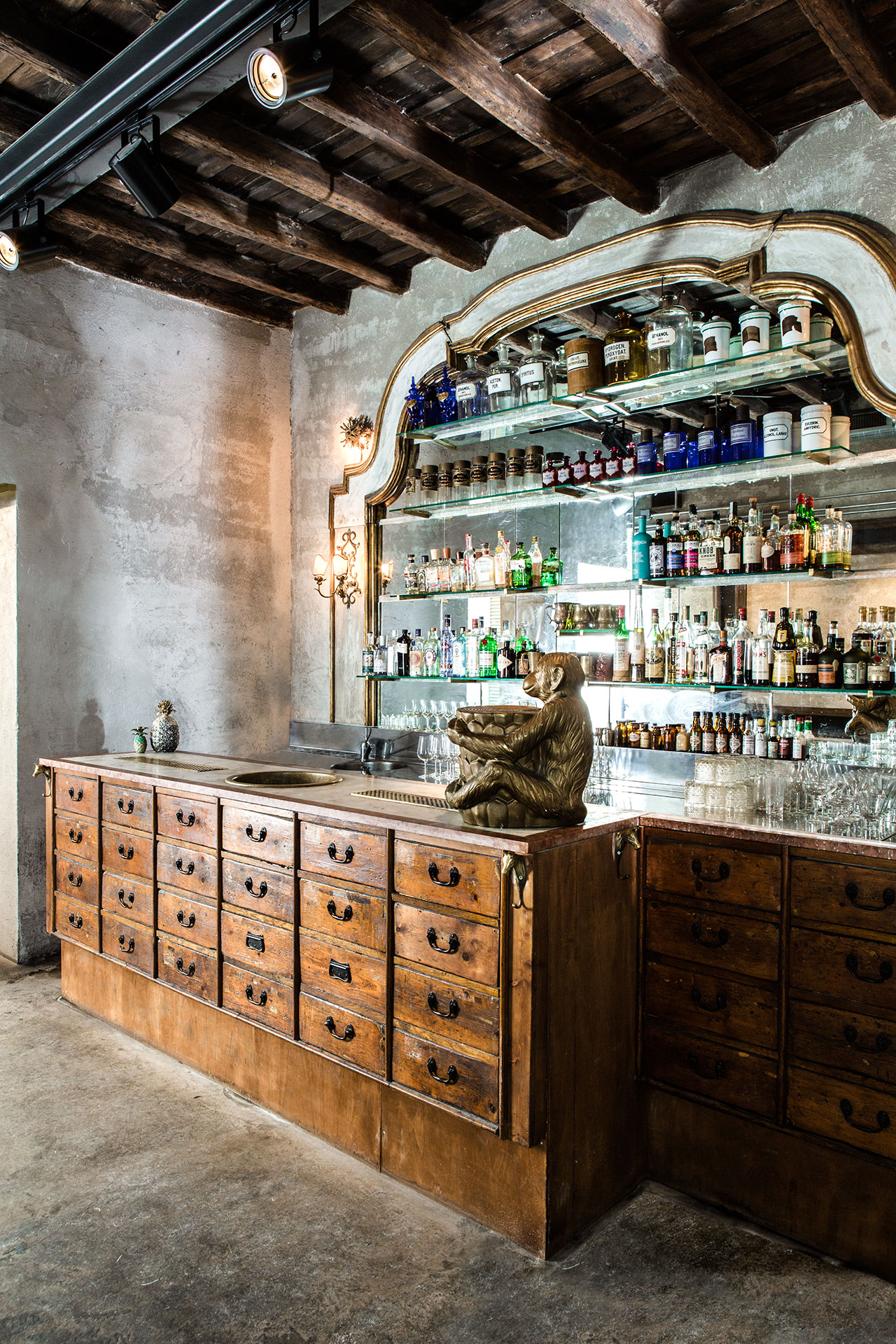
Photo by Serena Eller.
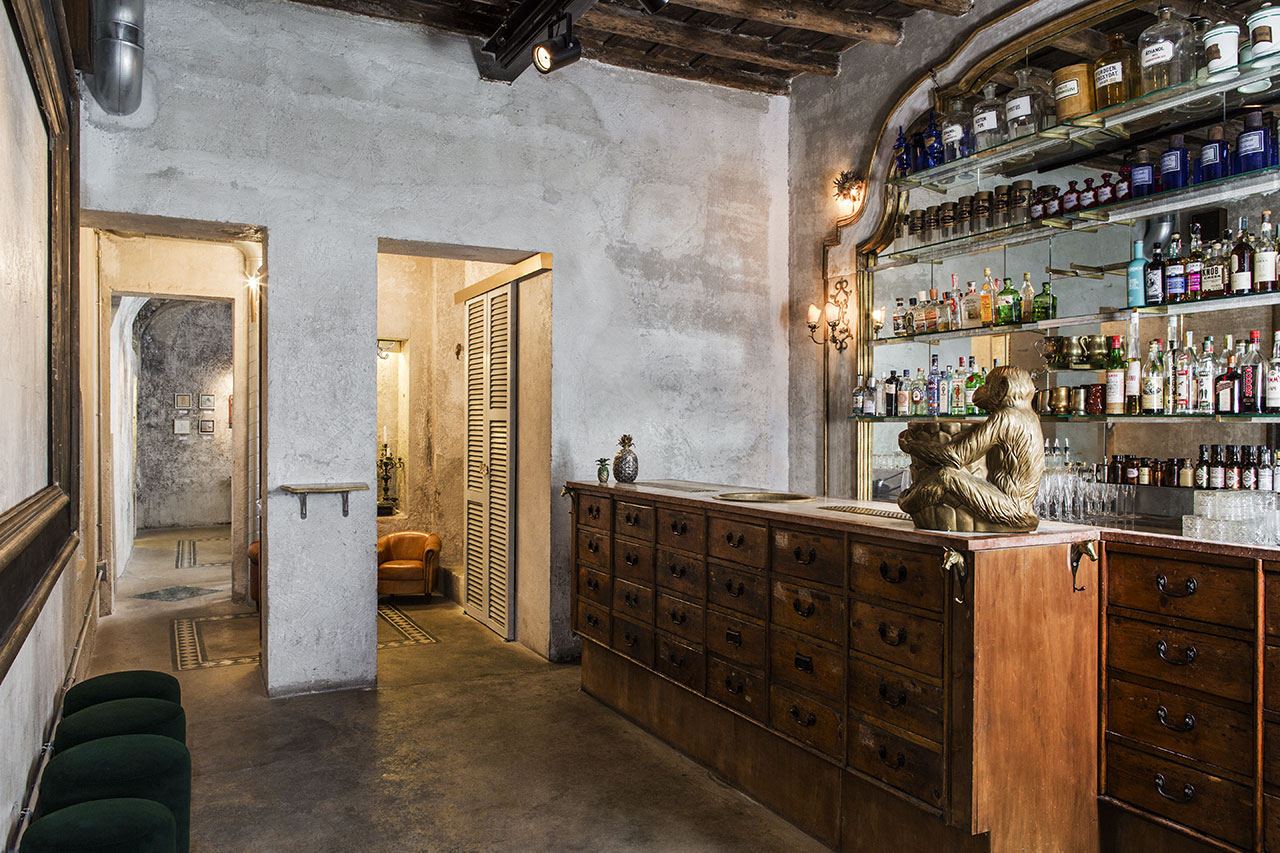
Photo by Serena Eller.
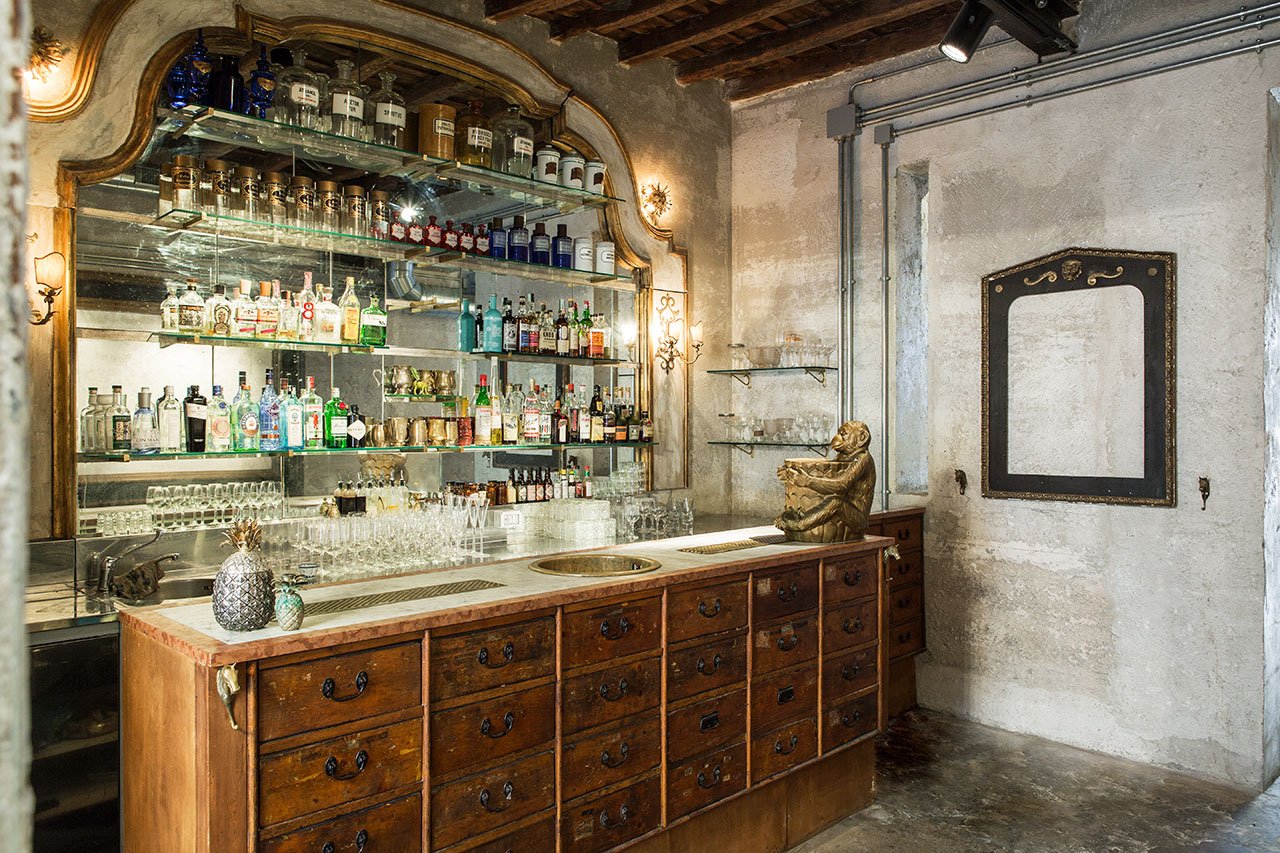
Photo by Serena Eller.

Photo by Serena Eller.
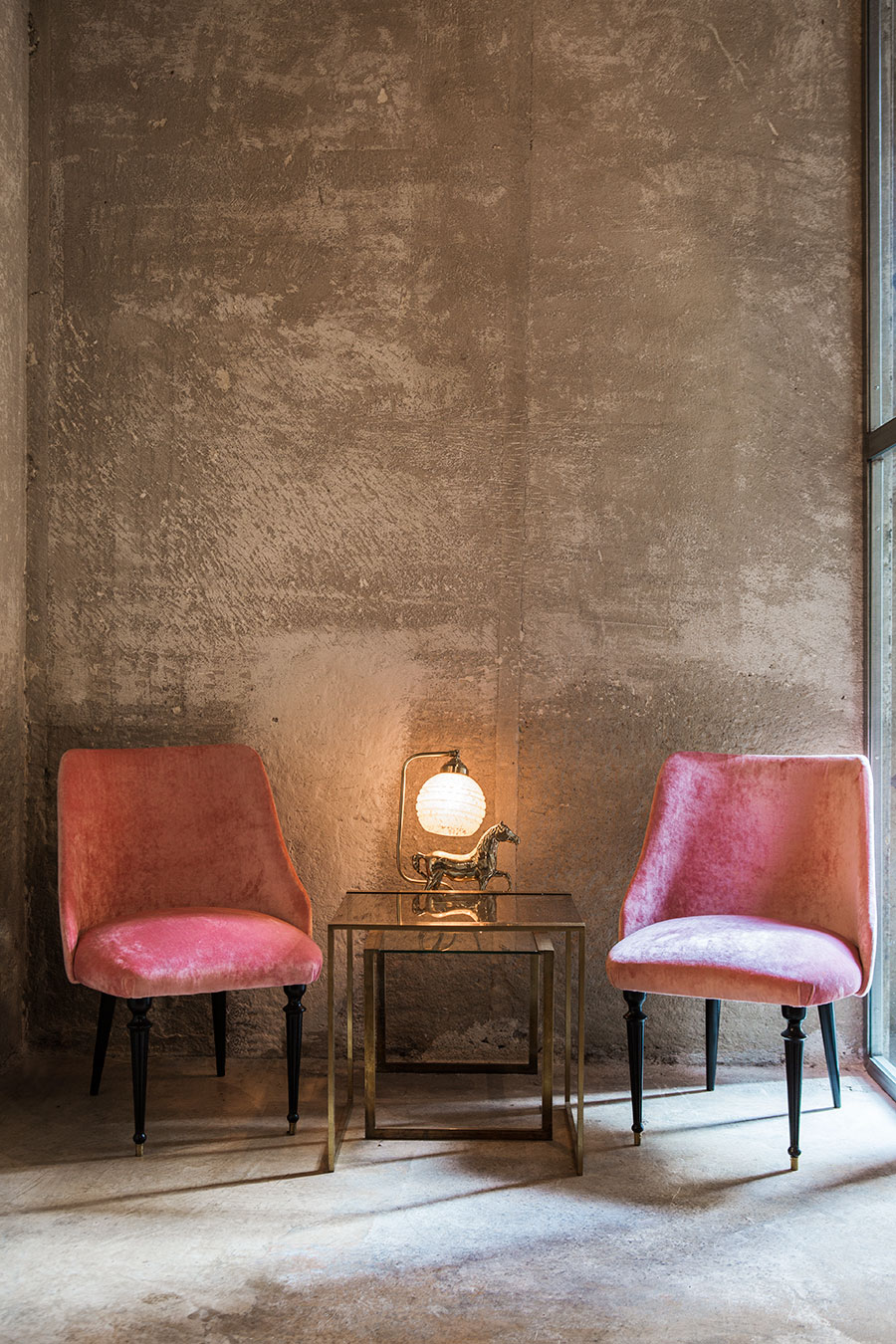
Photo by Serena Eller.
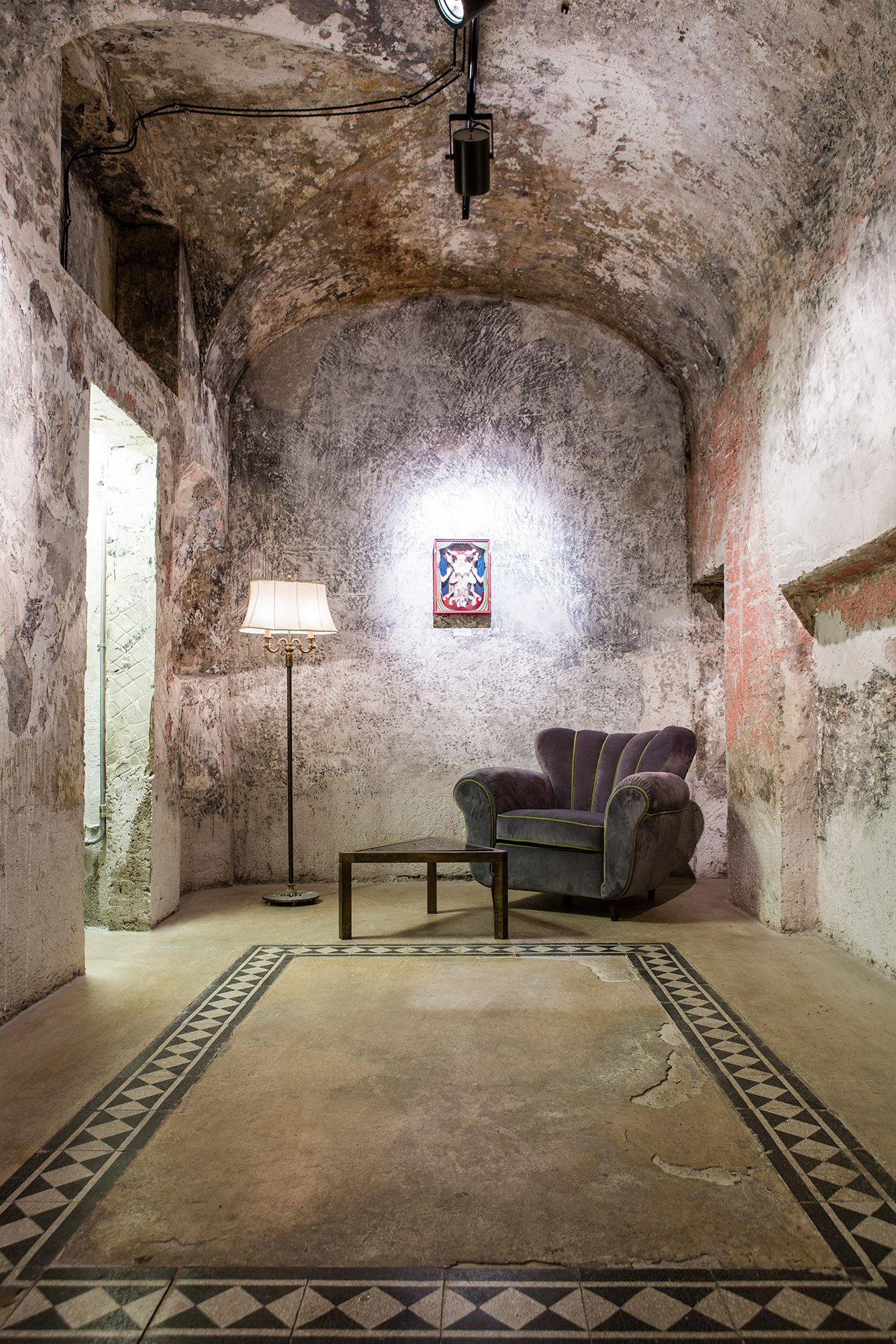
Photo by Serena Eller.




